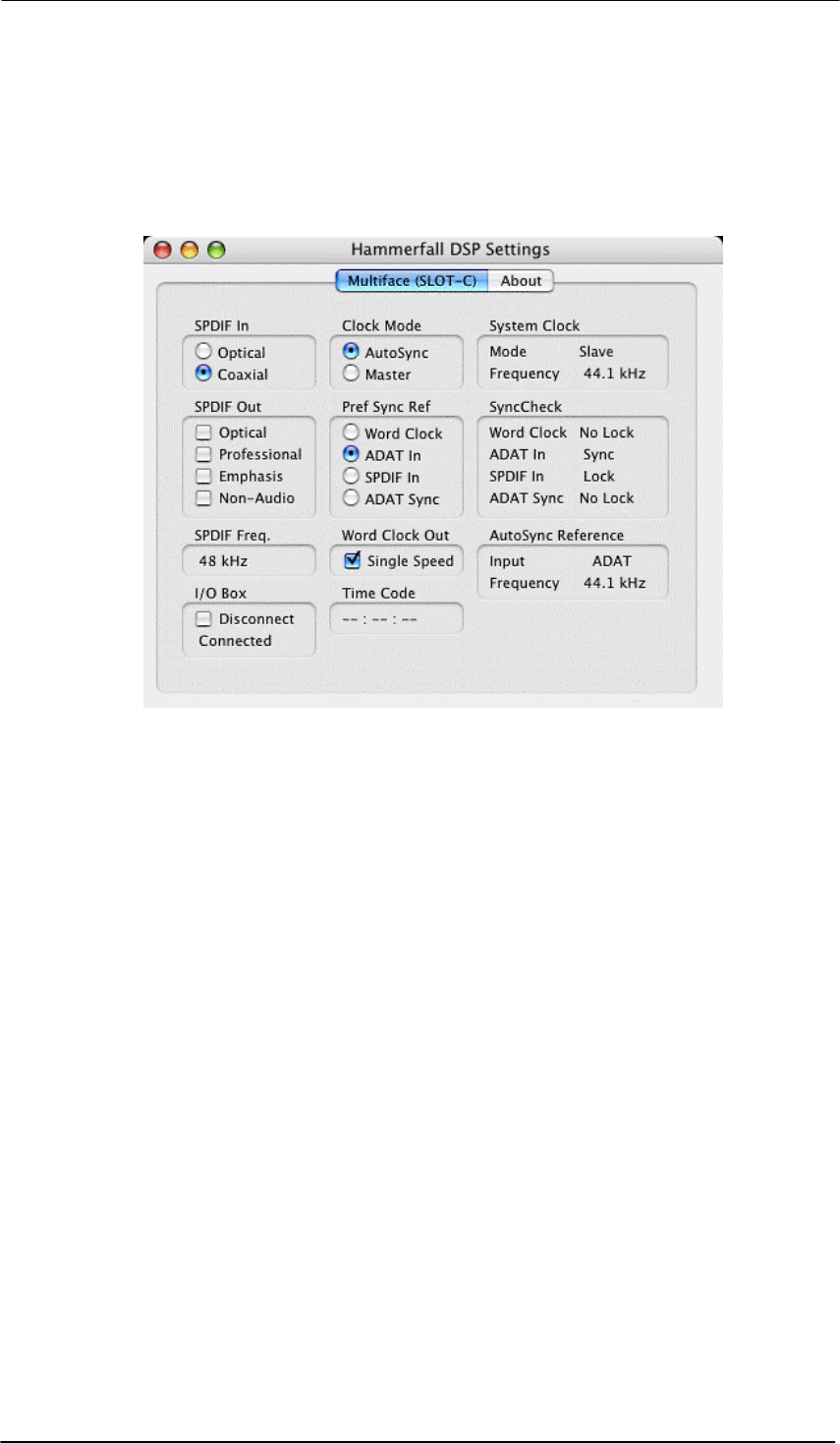
40
User's Guide HDSP System Multiface II © RME
If several digital devices are to be used simultaneously in a system, they not only have to oper-
ate with the same sample frequency but also be synchronous with each other. This is why digi-
tal systems always need a single device defined as ‘master’, which sends the same clock signal
to all the other (‘slave’) devices. RME’s exclusive SyncCheck technology (first implemented in
the Hammerfall) enables an easy to use check and display of the current clock status. The
‘SyncCheck’ field indicates whether no signal (‘No Lock’), a valid signal (‘Lock’) or a valid and
synchronous signal (‘Sync’) is present at each of the digital clock source inputs. The AutoSync
Reference display shows the current sync source and the measured frequency.
In practice, SyncCheck provides the user with an easy way of checking whether all digital de-
vices connected to the system are properly configured. With SyncCheck, finally anyone can
master this common source of error, previously one of the most complex issues in the digital
studio world.
Thanks to its AutoSync technique and lightning fast PLLs, the HDSP is not only capable of han-
dling standard frequencies, but also any sample rate between 28 and 103 kHz. Even the word
clock input, which most users will use in varispeed operation, allows any frequency between 28
kHz and 105 kHz.
At 88.2 or 96 kHz: If one of the ADAT inputs has been selected in ‘Pref Sync Ref’, the sample
frequency shown in the ‘SPDIF In’ field differs from the one shown in ‘AutoSync Ref’. The card
automatically switches to its Sample Split mode here, because ADAT optical inputs and outputs
are only specified up to 48 kHz. Data from/to a single input/output is spread over two channels,
the internal frequency stays at 44.1 or 48 kHz. In such cases, the ADAT sample frequency is
only half the SPDIF frequency.


















